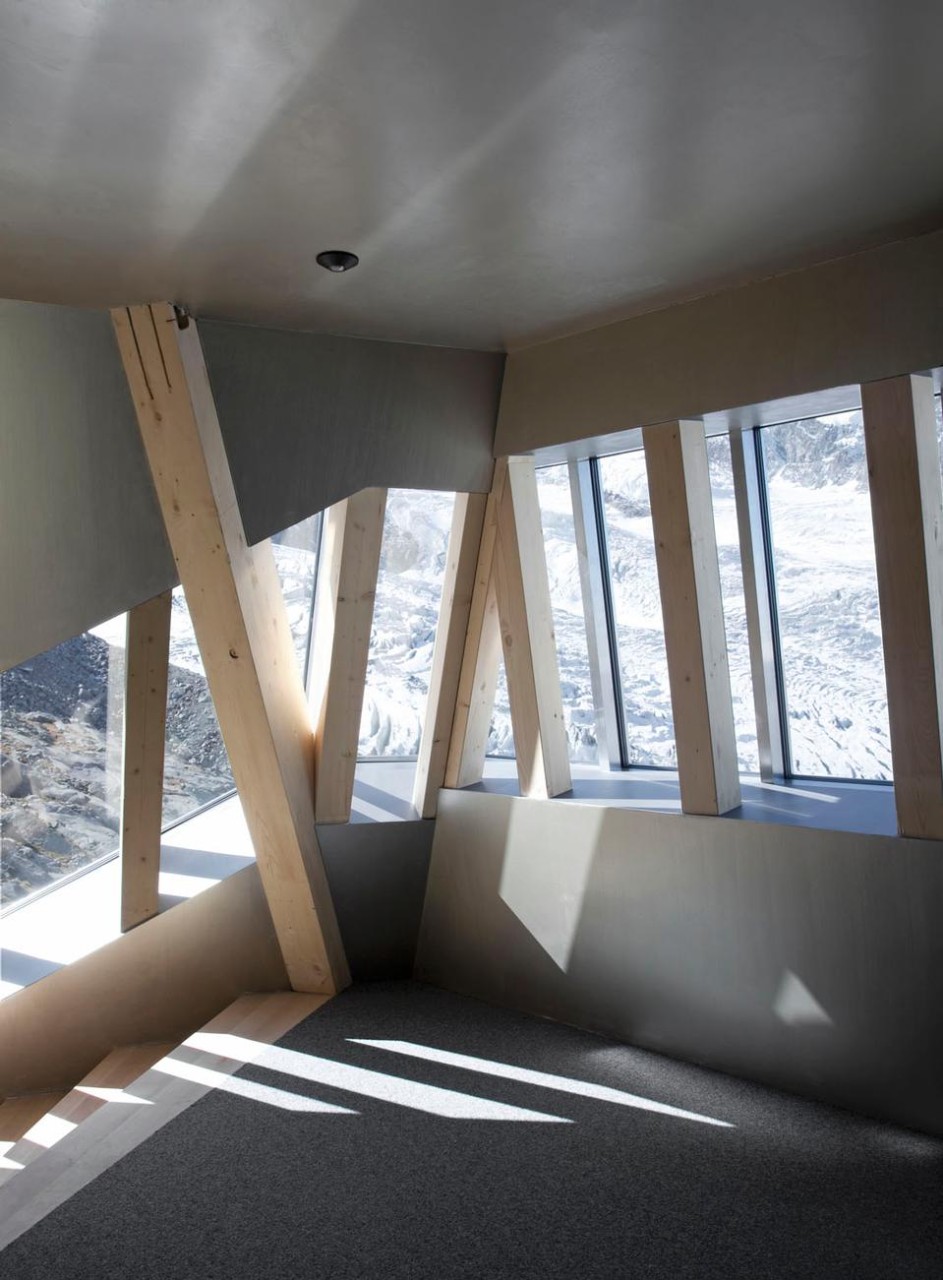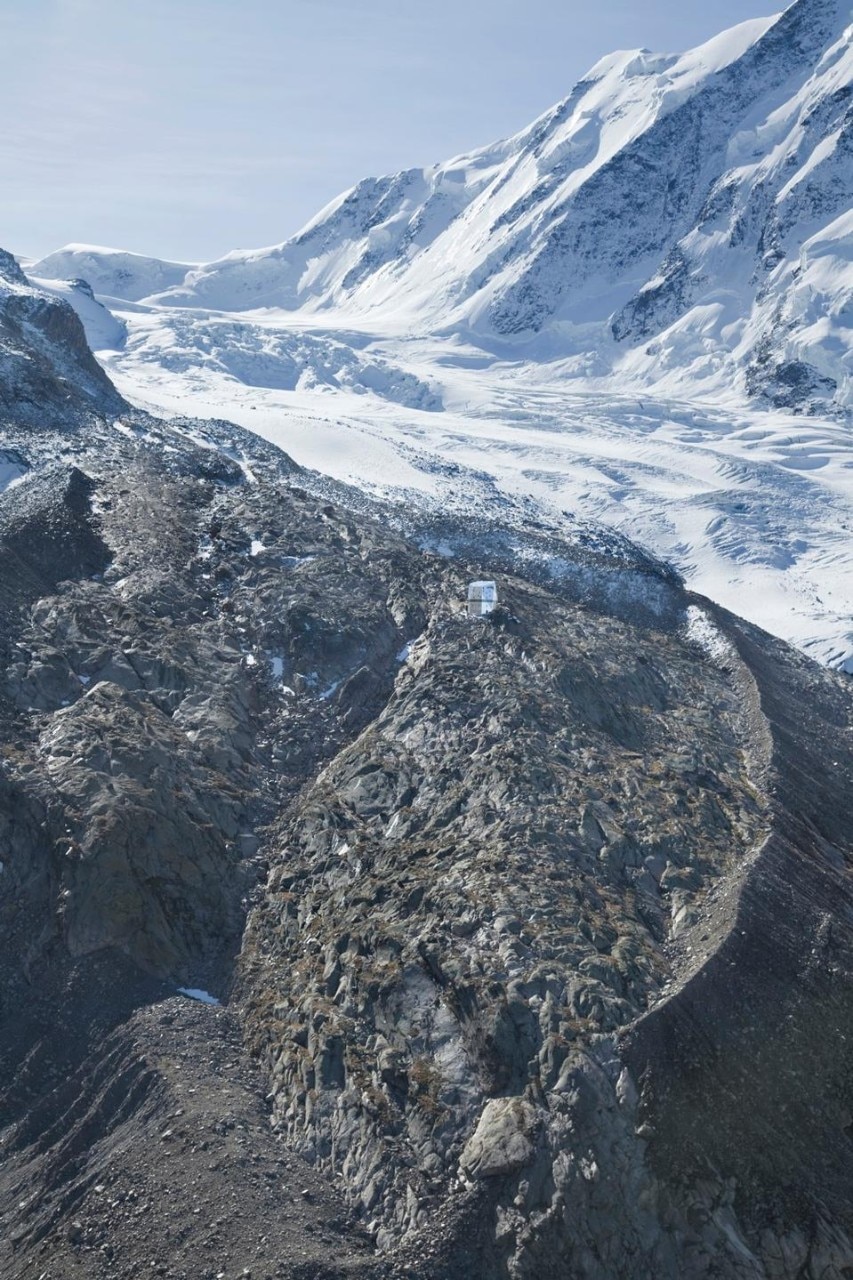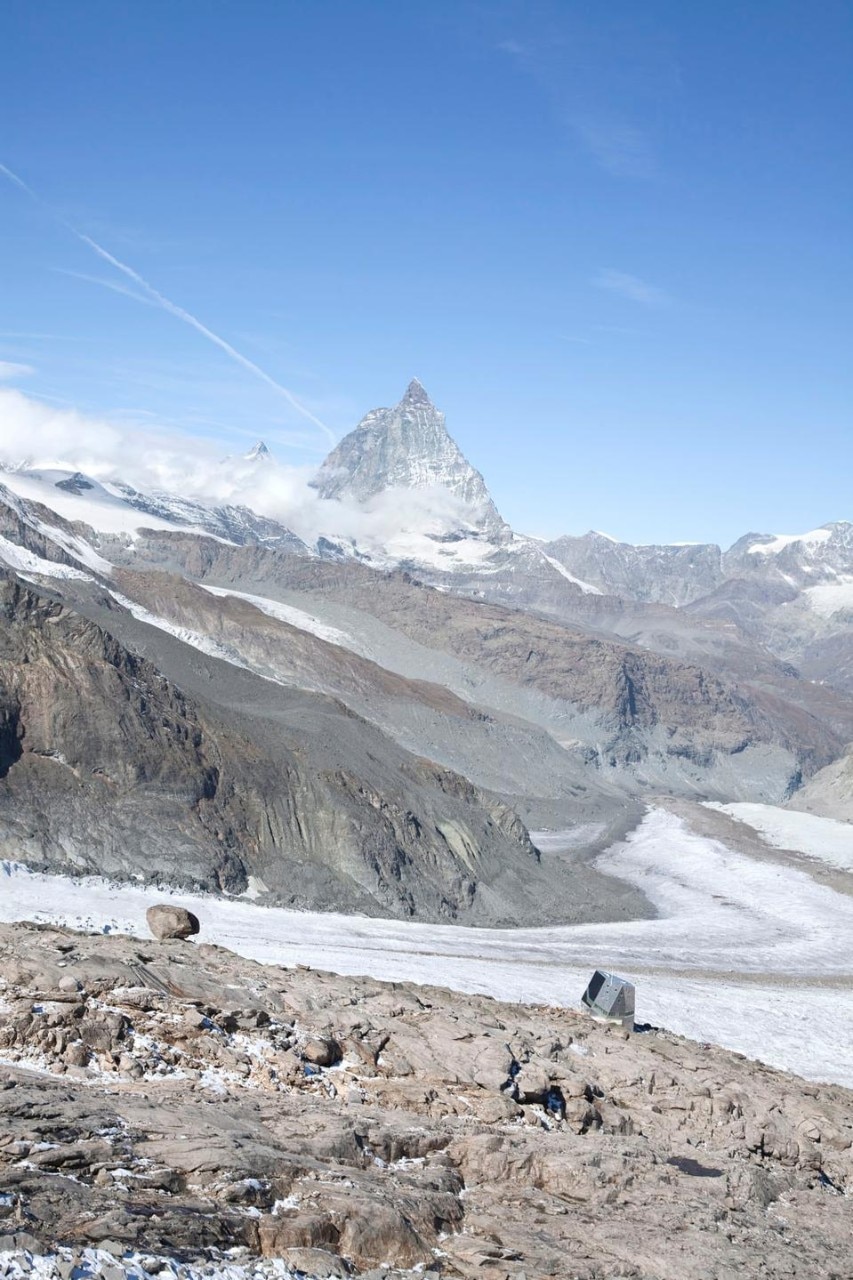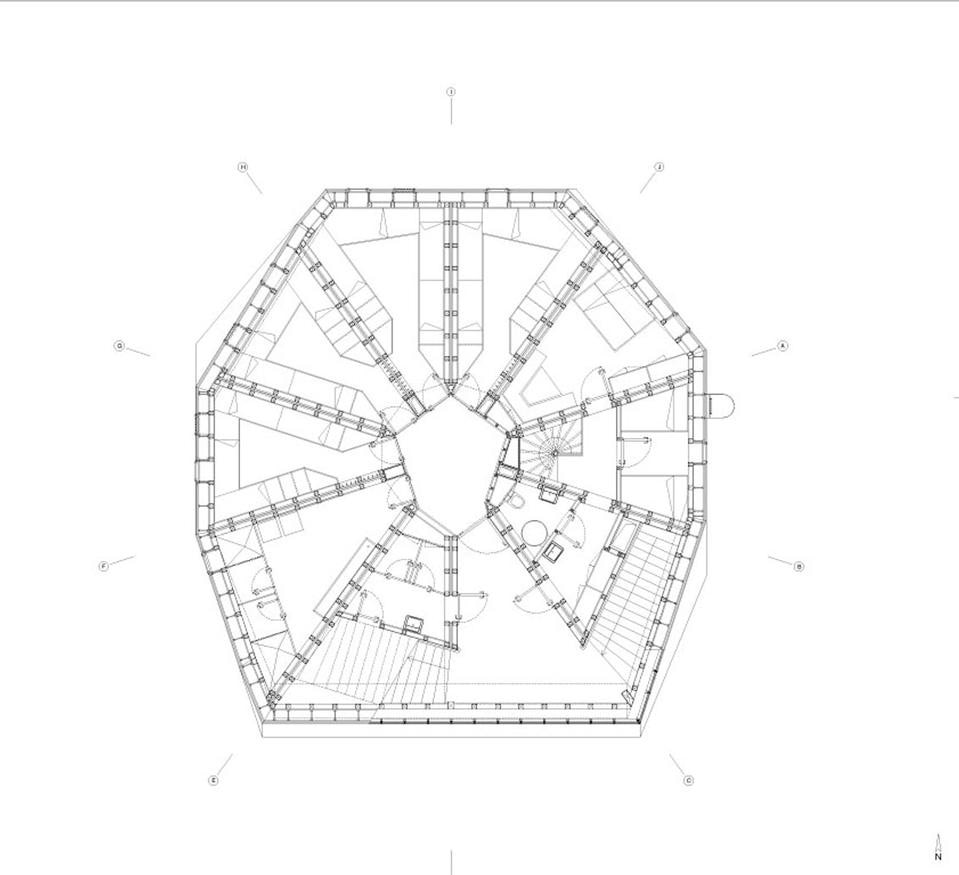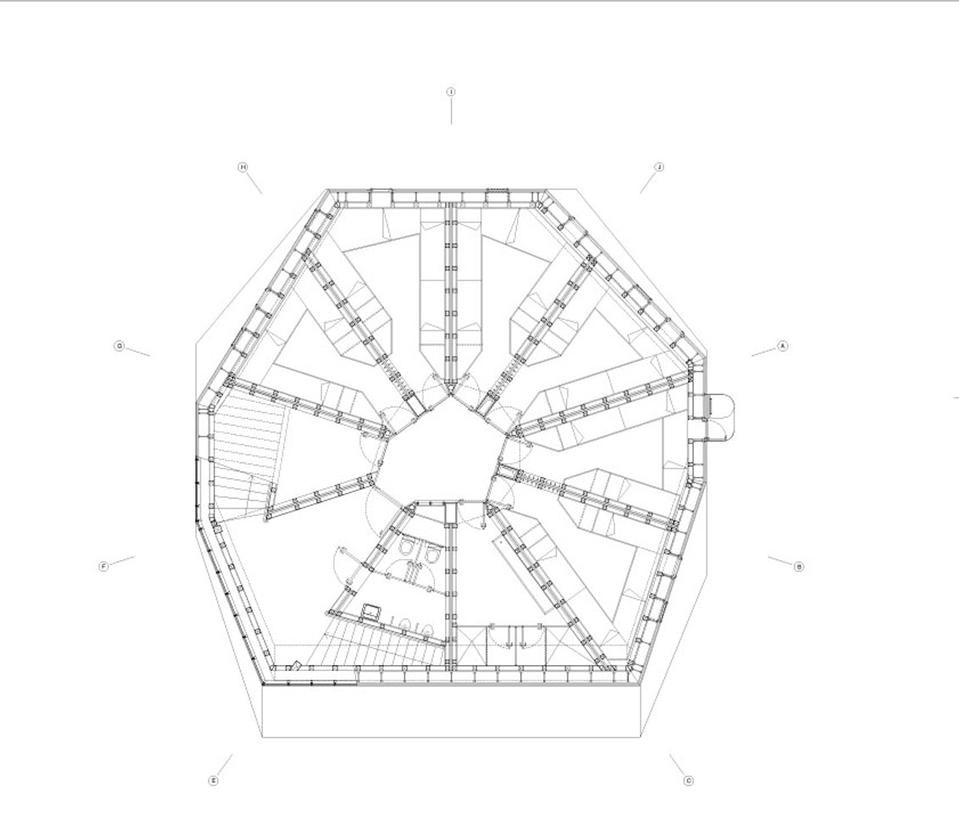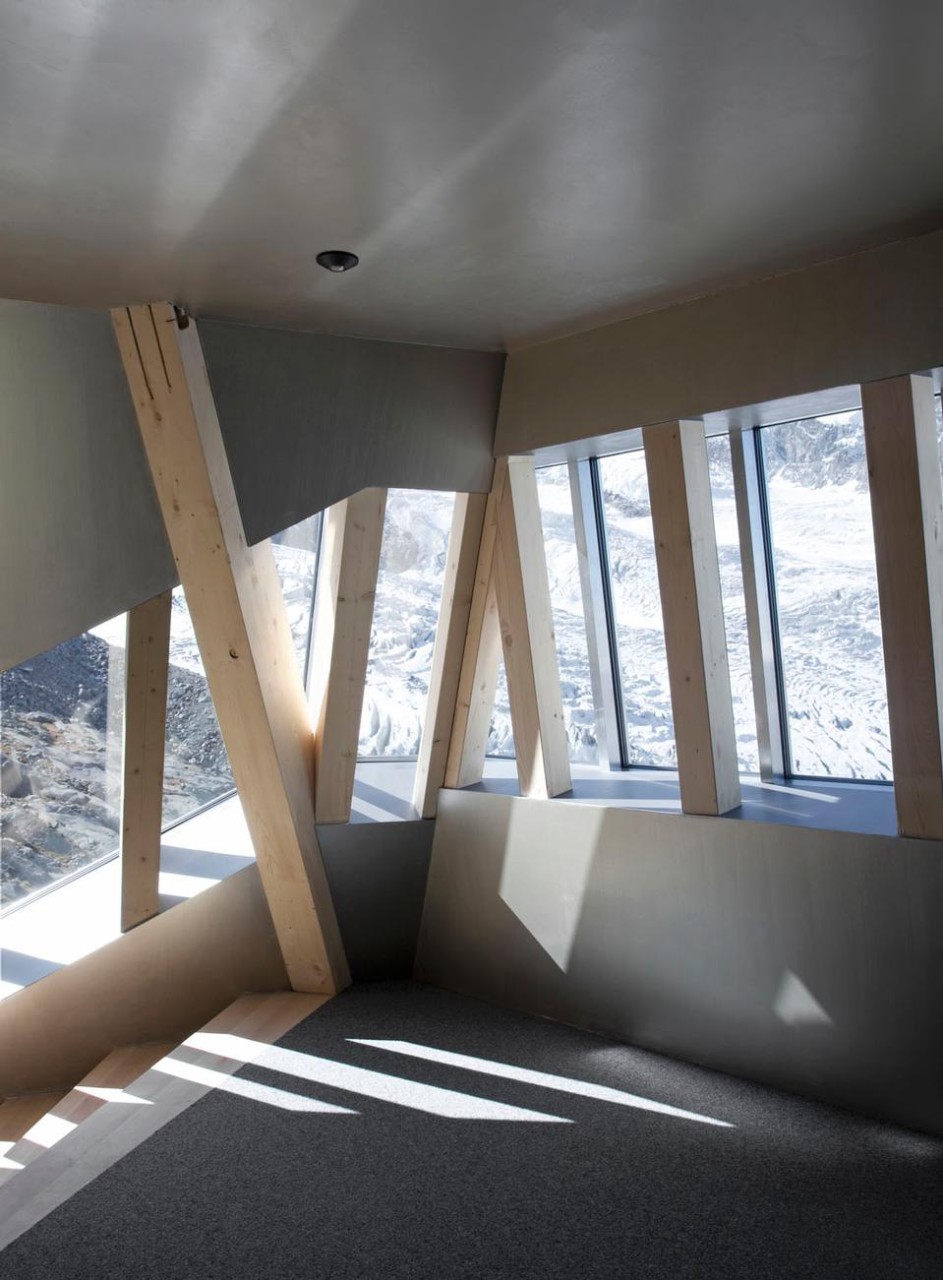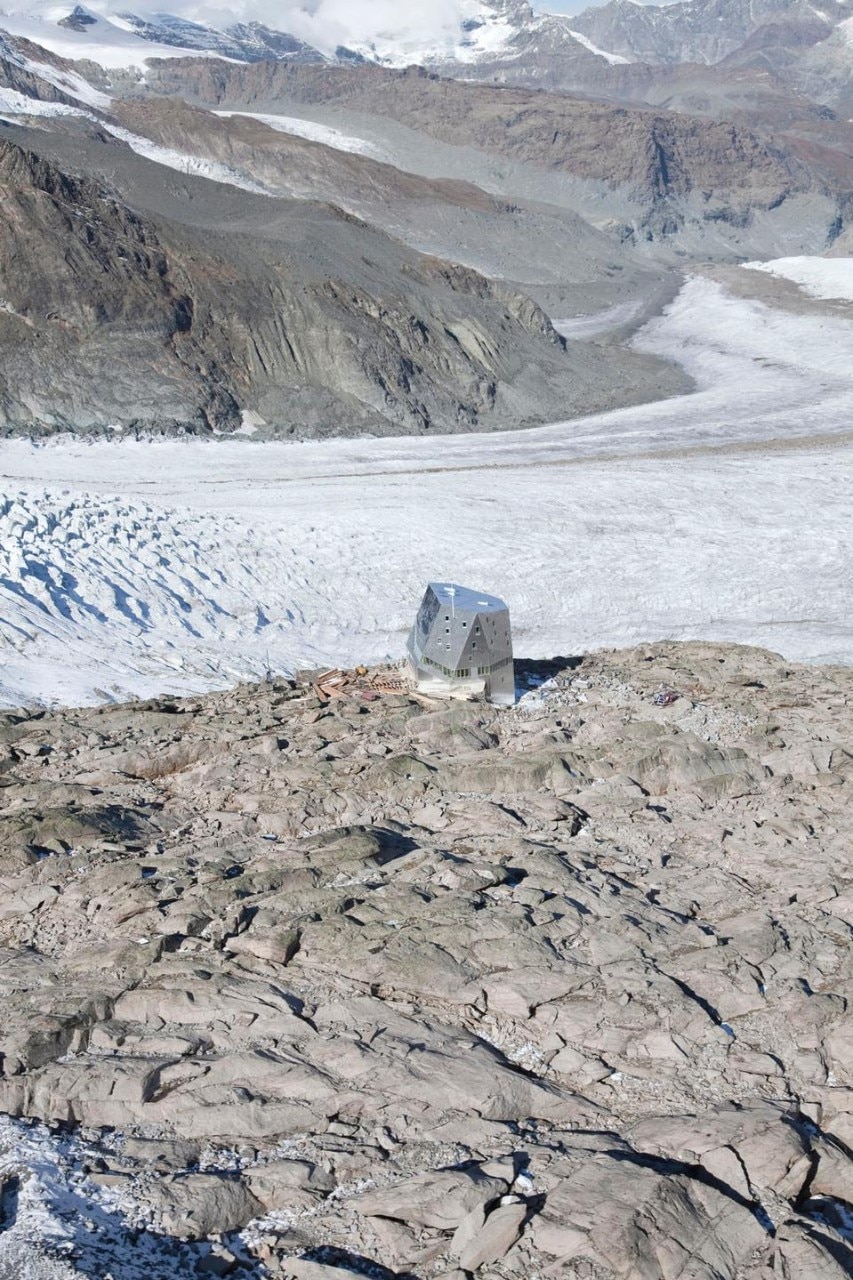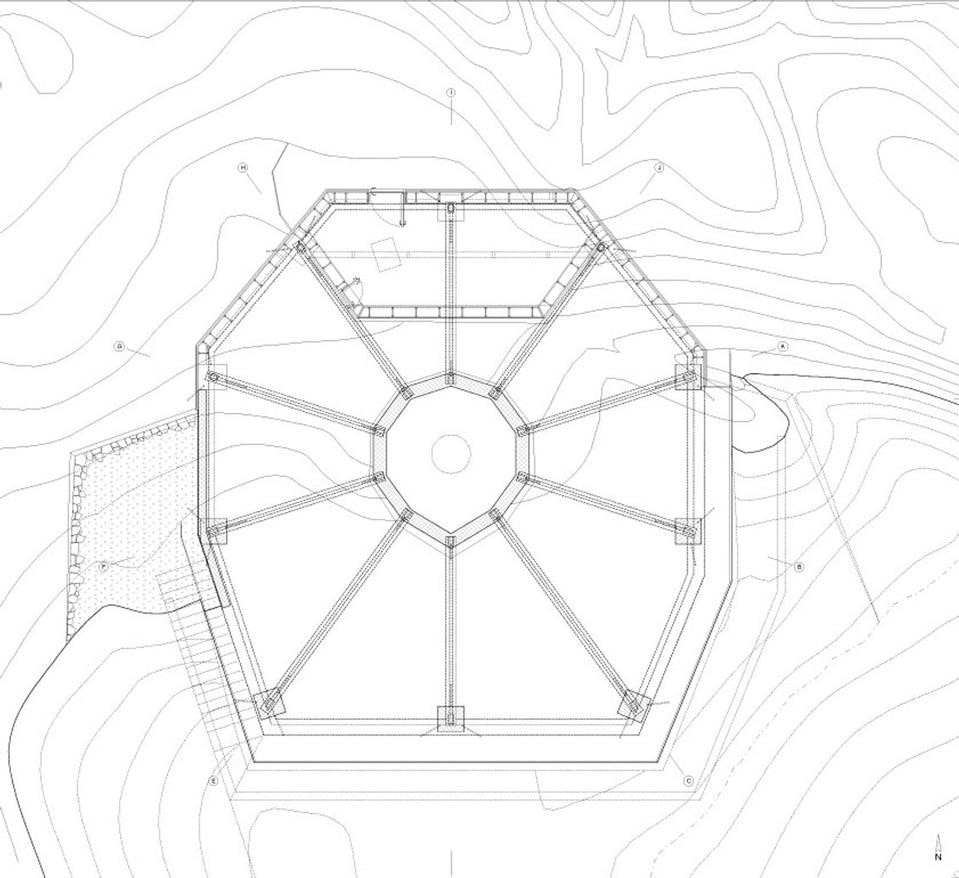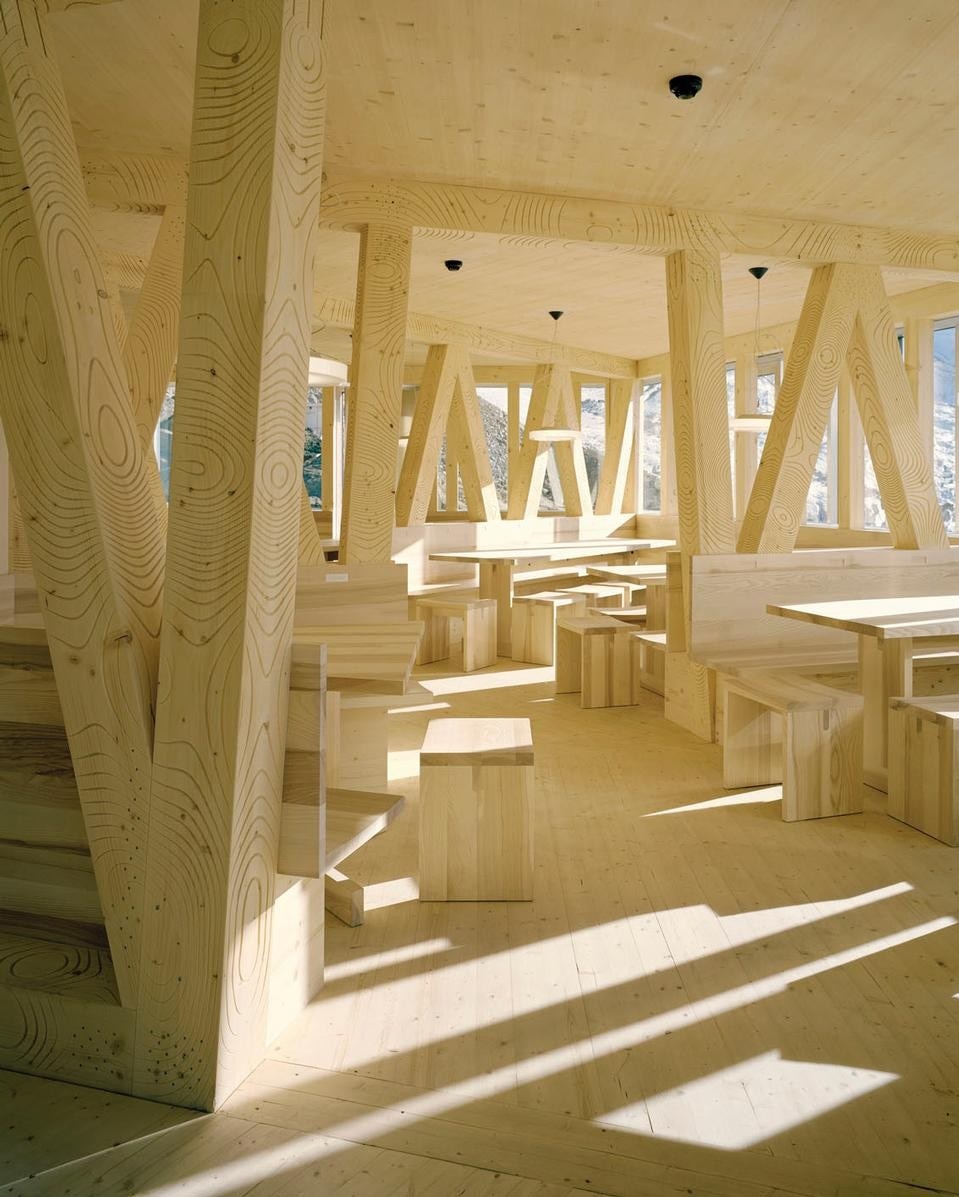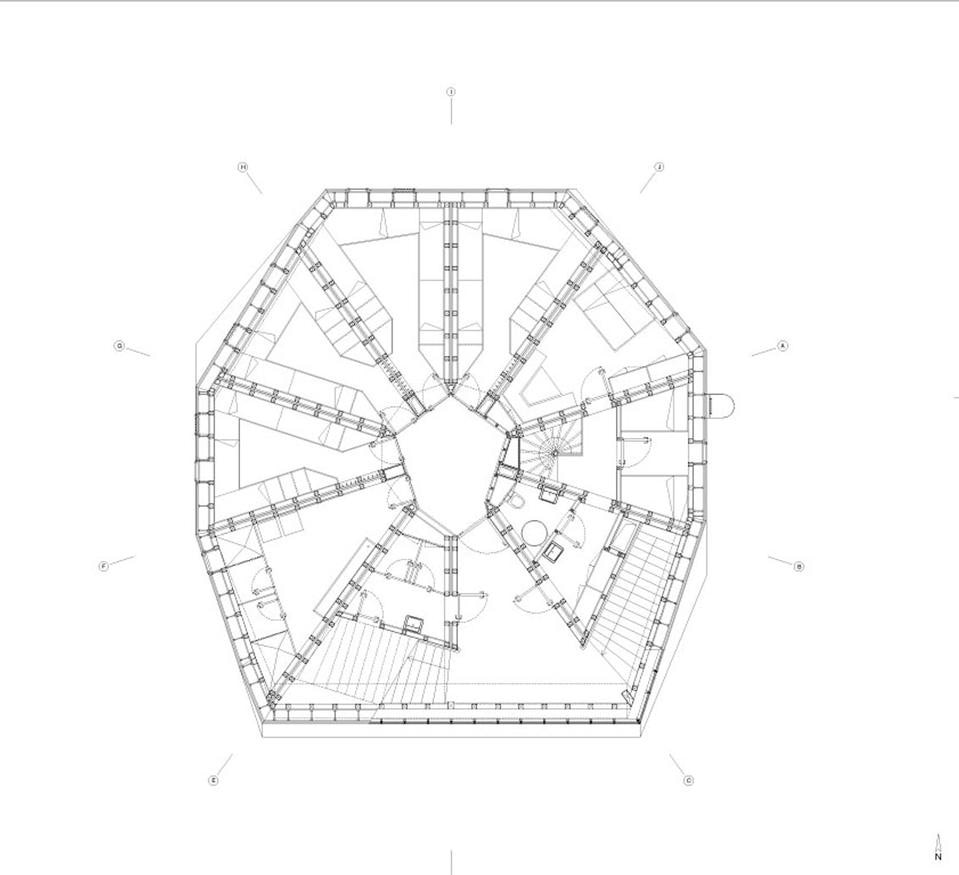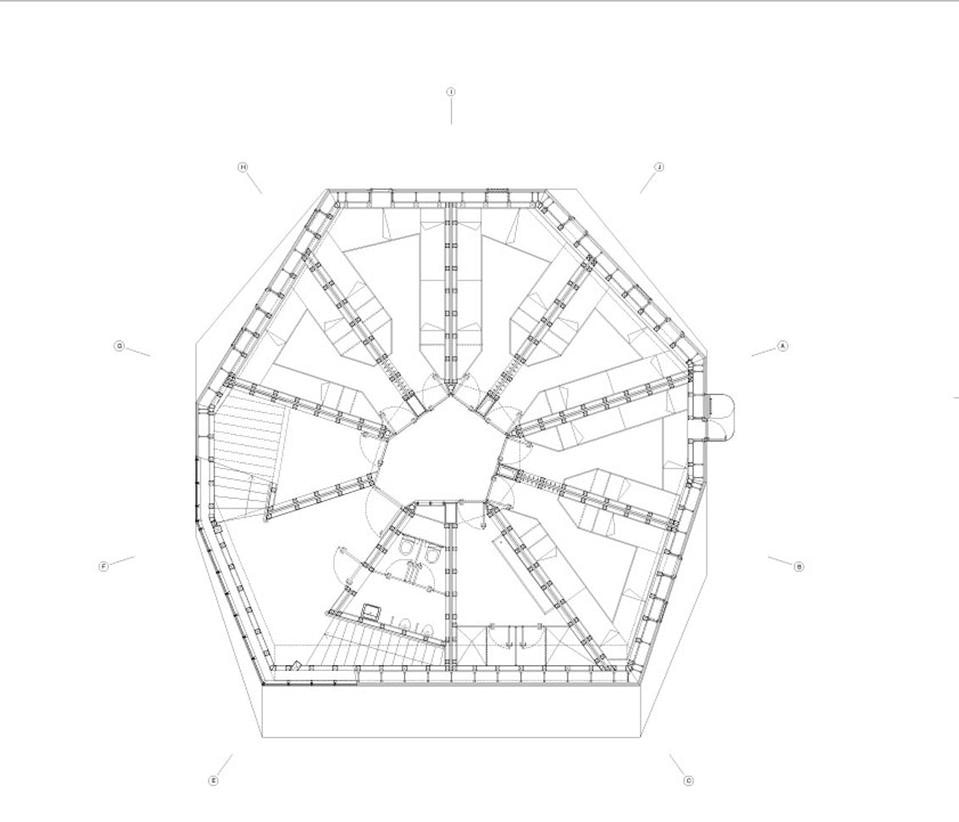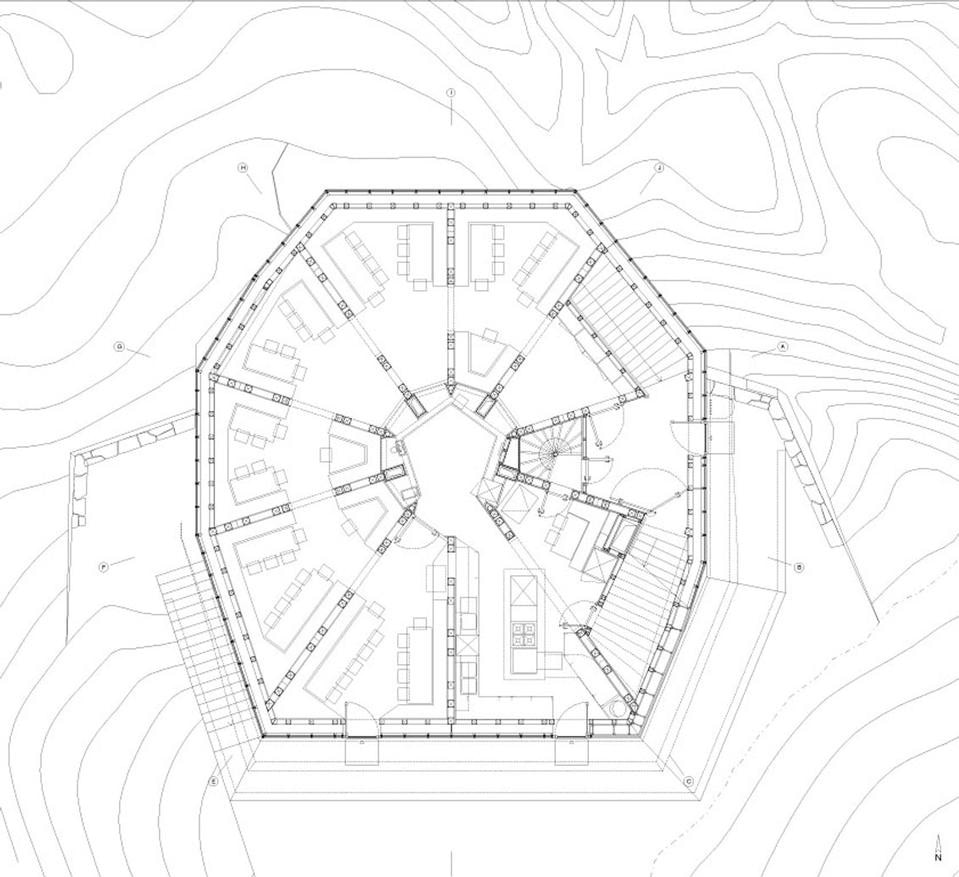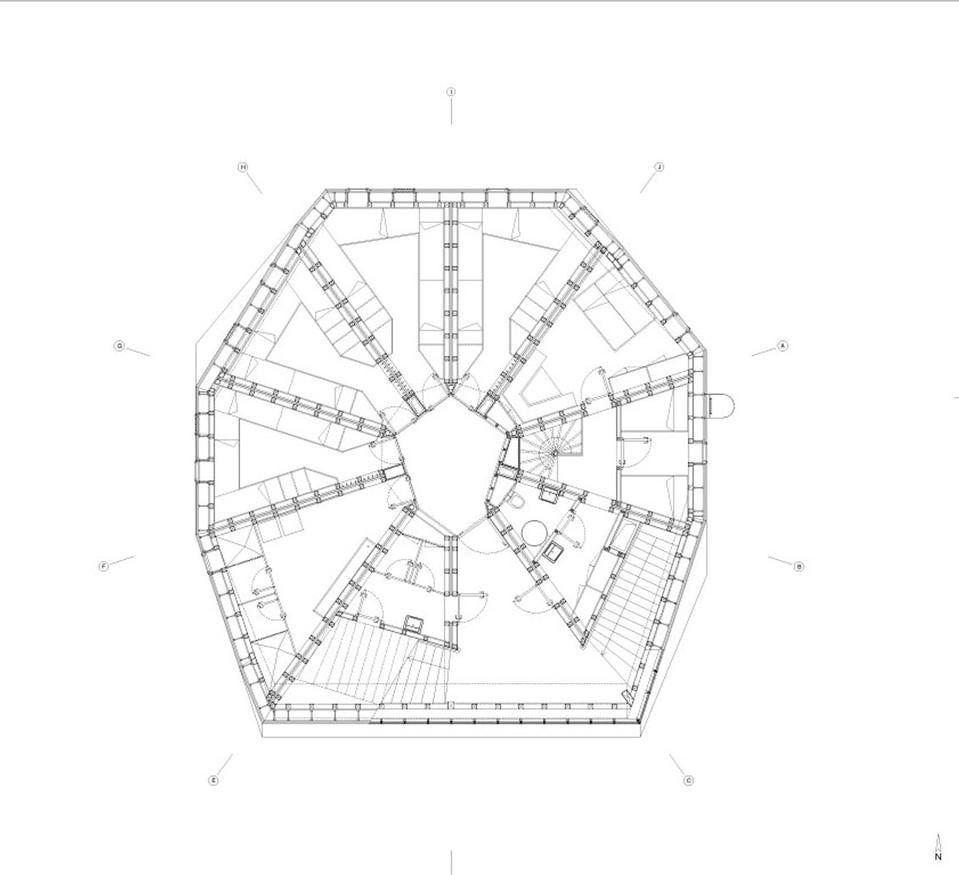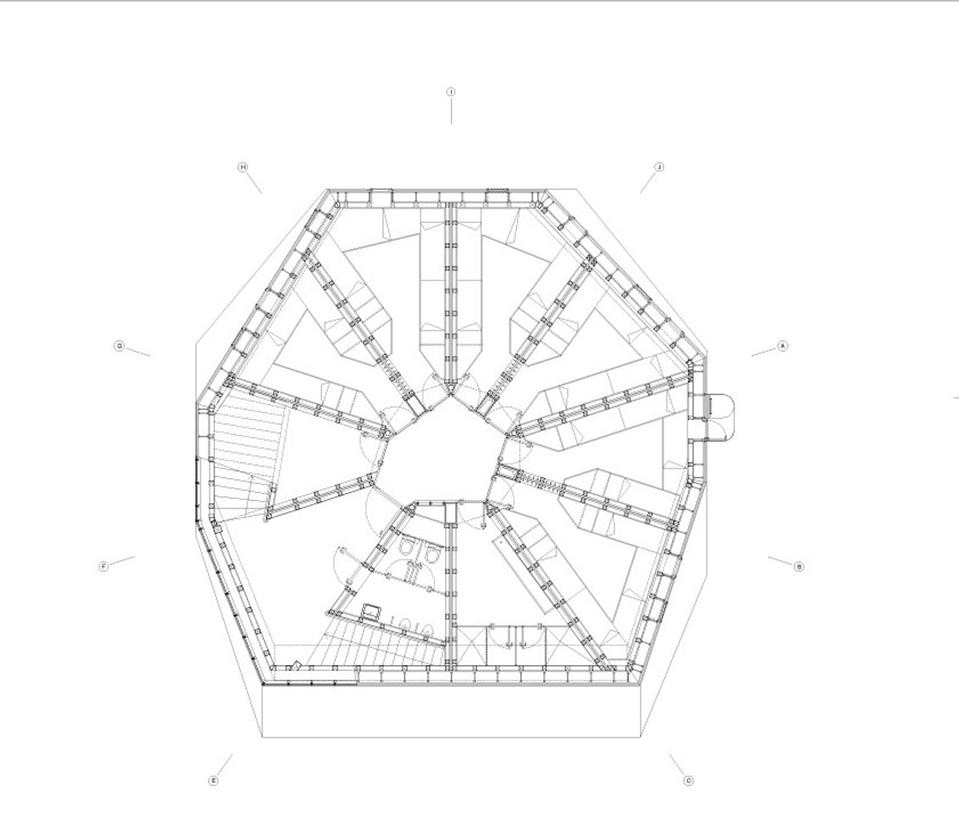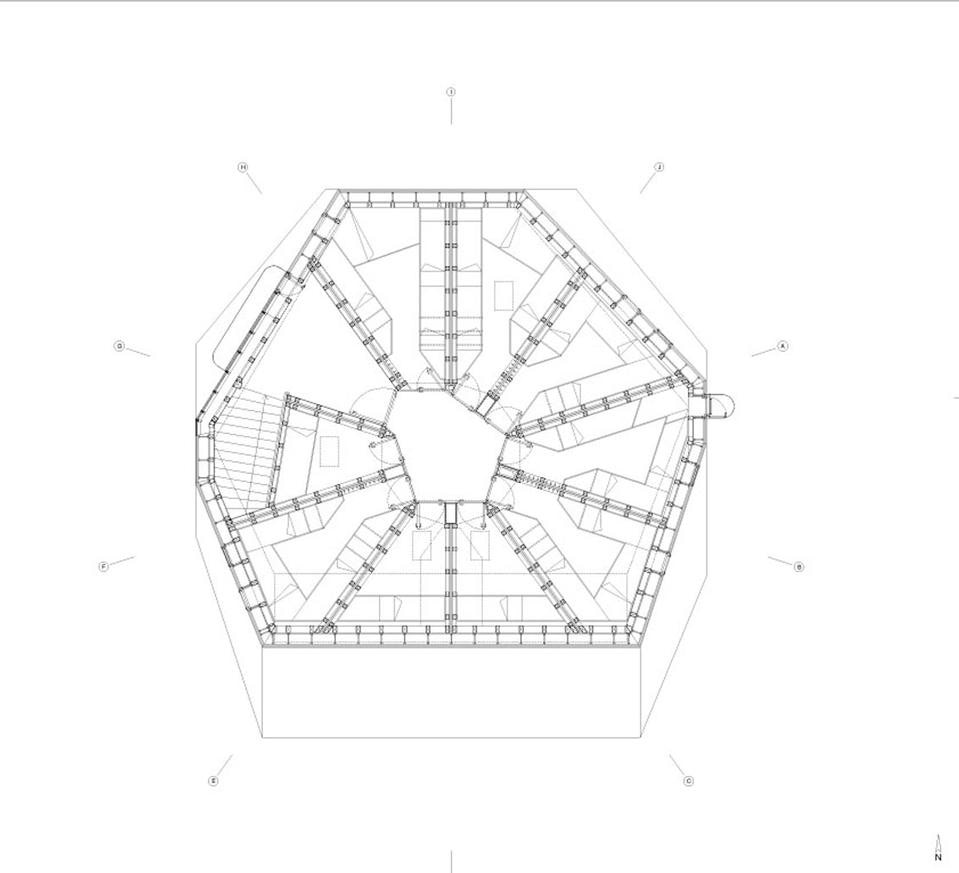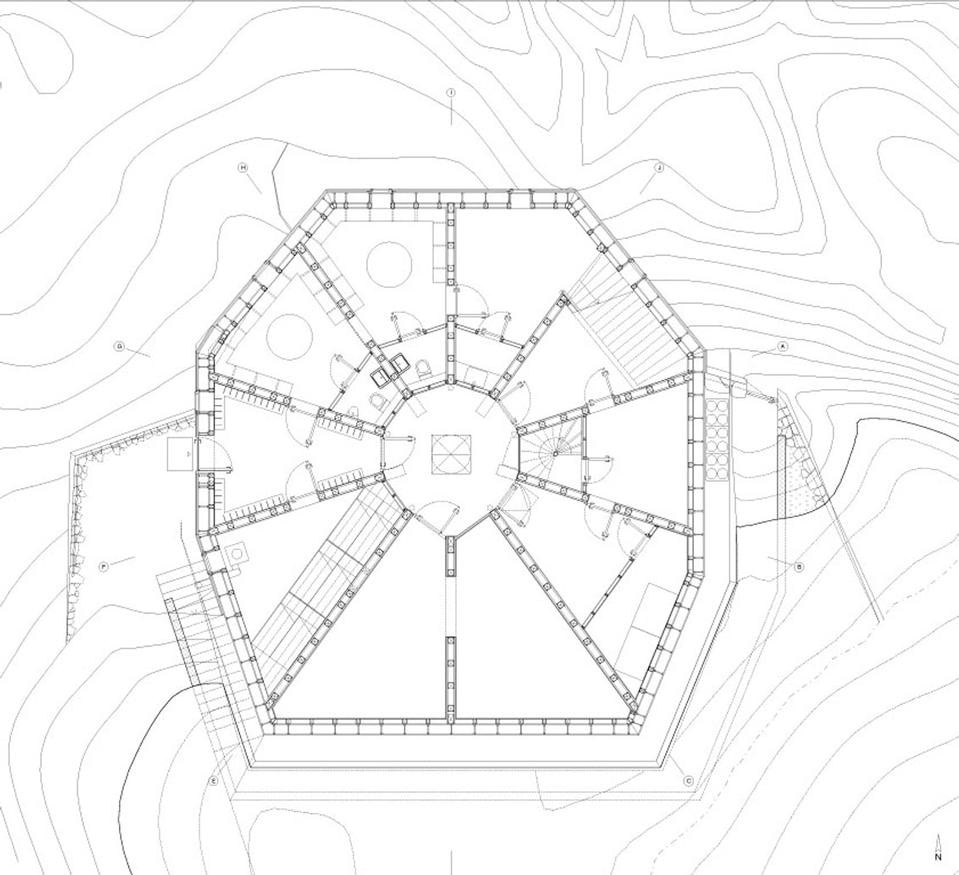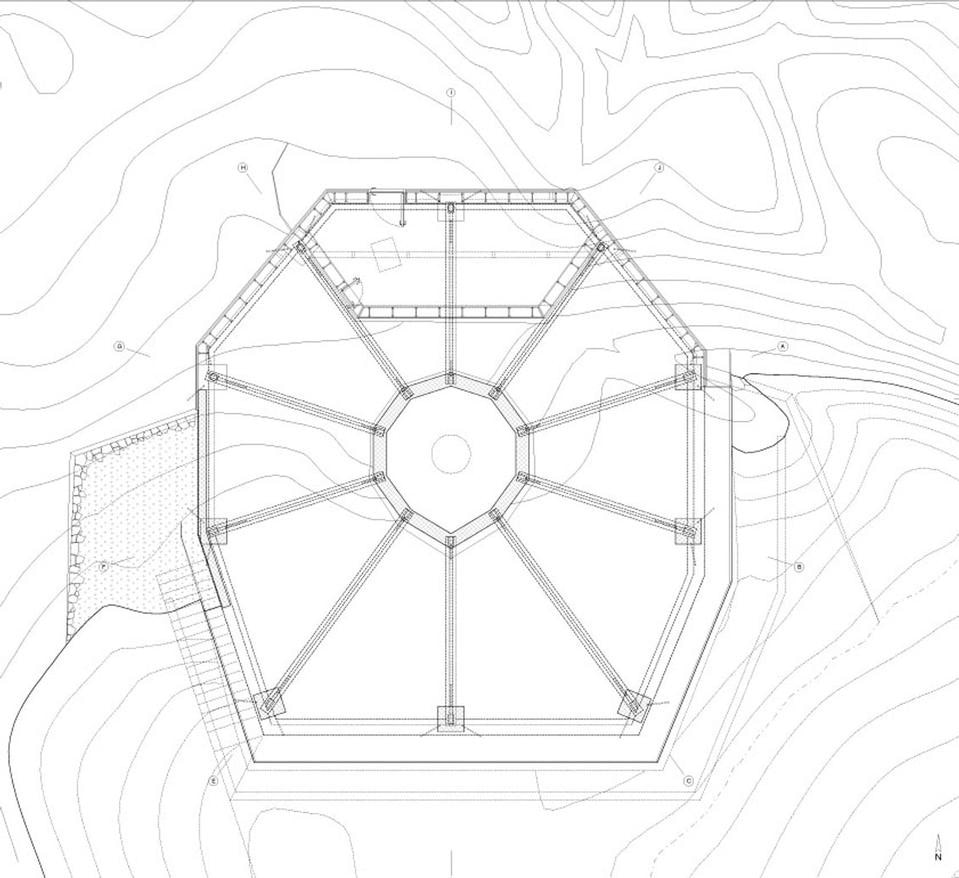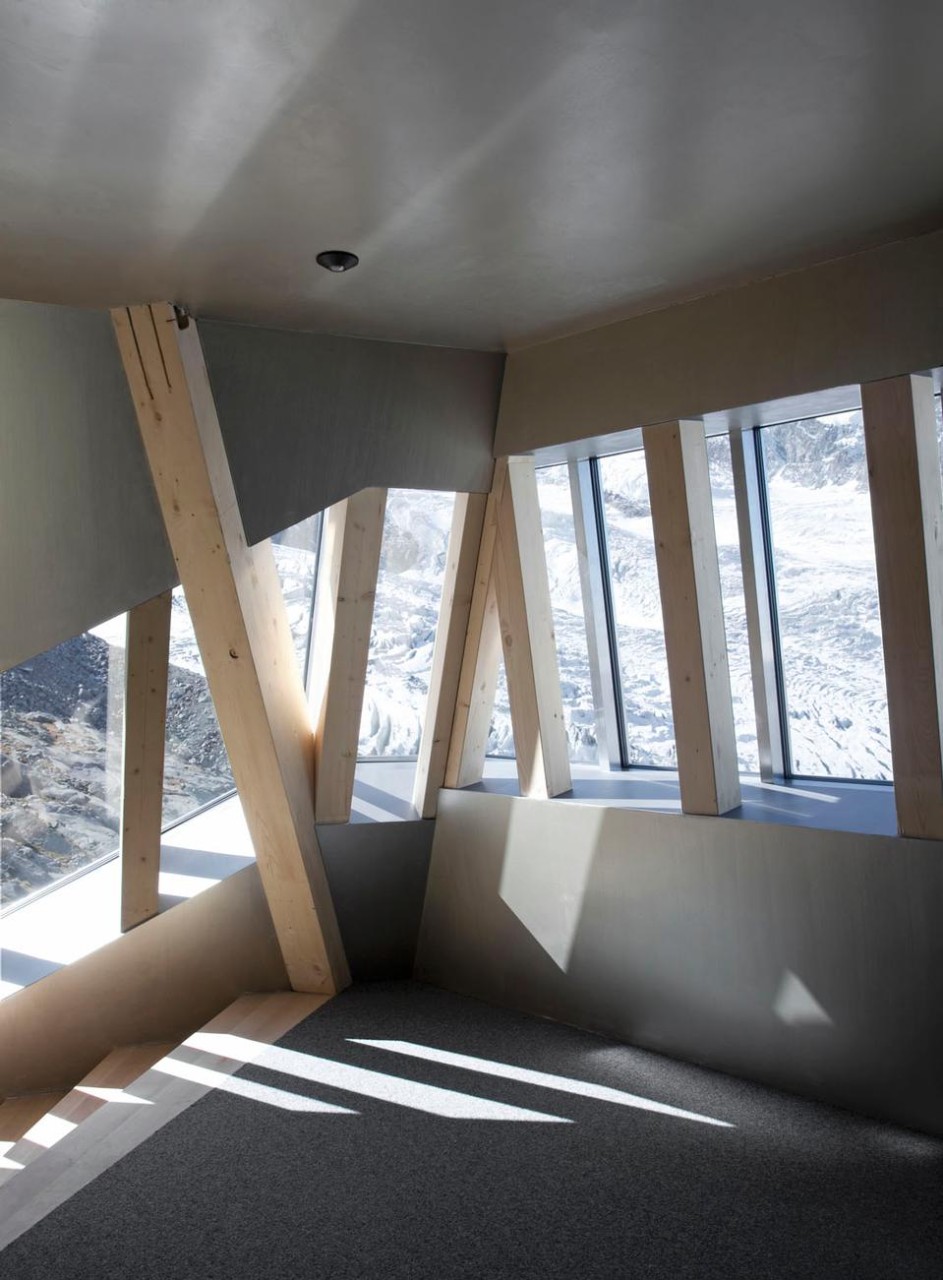In the winter term 2003/2004, the Studio Monte Rosa at the ETH Zurich’s architecture and construction department was set up. Working over four terms, a total of over thirty students devised a design for the New Monte Rosa Hut. The student’s ideas developed into a feasible project with the support of professors and experts from various disciplines.
So now a five-storey timber construction is to be built on stainless steel foundations thrusting down into the rock. Its metallically shimmering aluminium outer covering and unusual polygonal shape make it look like a rock crystal. The guest rooms can accommodate a total of 120 people, and the enchanting surroundings are effectively invited in as well, by a cascade of steps and a wide window facade.
An ambitious target: 90 per cent energy self-sufficiency
But the new hut is not intended to convince in aesthetic terms alone, but above all through its resource- and energy-friendly construction and operation. 90 per cent self-sufficiency in energy is the ambitious target. Solar energy for sewage treatment equipment, lighting and household appliances etc. is gained from an 85 m2 photovoltaic plant built into the south facade of the building. Excess energy is stored in valve-regulated lead-acid accumulators, which guarantee continuity of supply even when the sky is overcast. A rapeseed oilfired combined heat and power plant is used as an additional power source for peak demand periods. Thermal energy from waste air is recovered by a heat reclamation process. The heat emitted by people also makes a considerable contribution to covering the room heating needs. If a great deal of heat energy is required or there are few people staying in the hut, additional solar energy is needed for heating, and this is provided by 35 m2 of thermal solar collectors.
Energy management will have an important part to play in achieving a high degree of self-sufficiency. It is not just a matter of optimising individual components; optimising the way these components work together leads to increasing efficiency for the system as a whole. In this way, optimised energy management links technology that is conventional and tried-and-tested as such to form a complex overall system, resulting in a high level of energy efficiency. So data such as weather forecasts and expected visitor numbers are fed in the energy management system as contributions to ‘model predictive control’, in other words dynamic marginal conditions are also taken into consideration. In comparison with the old Monte Rosa Hut, this package of measures reduces CO2 emissions created by running the building by about two third per guest per night. The New Monte Rosa Hut is also perceived as a research station investigating the efficient use of energy and resources. So the project will not be over for the ETH Zurich when the hut is opened. There will be a second research and development phase to examine how all this building technology proves its worth in the everyday operation of the New Monte Rosa Hut. Only then can it be established whether and how energy management can be further optimised. New research and development insights can be applied to running the hut and their efficiency measured in terms of energy self-sufficiency levels. The results of that process can then be applied to increasing energy efficiency for lowland buildings.
Sustainability from cradle to grave
The old hut will be demolished by 2010, after the New Monte Rosa Hut is opened. But thought is also being given to the end of the planned new hut’s life. Researchers in the ecological system design department are assessing the building with the aid of cradle-to-grave life-cycle analyses. Holistic analysis of this kind guarantees forward-looking and full ecological optimisation of the building and the way it is run, and sets standards for sustainable planning.
The structural components are made using CAAD production methods, paying attention to the efficient use of materials. The range of construction possibilities is extended, and justifies a particular kind of architectural statement through logic applied directly in terms of materials and manufacture. Computer calculation also makes it possible to achieve the ideal component size and weight. This is in its turn very important for transport, as there is no road to the site. When the old Monte Rosa Hut was built in 1895, mules were used to carry the components across the glacier, the last leg of the journey. This option was also examined for the New Monte Rosa Hut, but rejected on grounds of time and expense. Helicopters will now be used instead of animals.
This ambitious building project has its price. It will cost about 6.4 million Swiss francs to build the hut. The SAC is contributing about 2.15 million. The ETH Zurich has received the rest of the money from numerous benefactors and sponsors from all sorts of sectors. Walkers and mountaineers
Mountain Crystal: New Monte Rosa Hut
design by
ETH Zürich, Swiss Alpine Club (SAC) /Studio Monte Rosa ETH Zürich, Bearth&Deplazes Architekten, architektur + bauprozess!, Architektur + Design, Lauber Iwisa, Gramazio & Kohler
Project partners
Federal Institute of Technology Zurich (ETH Zürich)
Swiss Alpine Club (SAC)
General planning
Studio Monte Rosa ETH Zürich and Bearth&Deplazes
Architekten AG, Chur
architektur + bauprozess!, Zürich
Architektur + Design GmbH, Zermatt
Lauber Iwisa AG, Naters
Digital construction
Gramazio & Kohler, Architecture and Digital Fabrication, ETH Zürich
